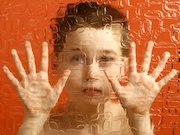
THURSDAY, July 12, 2018 — The underpinnings of autism may lie in an unexpected part of the brain, a small study suggests.
Scientists conducted brain scans on 20 boys with autism and 18 boys without the neurodevelopmental disorder. The scans showed that boys with autism had a significantly flatter surface on the right side of their cerebellum. That side happens to be involved in language processing.
The researchers also found that a flatter cerebellum was associated with differences in thinking abilities and communication, two skills often affected by autism.
But the study did not prove that differences in the cerebellum caused autism.
Still, “Our findings suggest we may need to rethink the role of cerebellar function and structure in young individuals at risk for atypical brain development,” said senior study author Kristina Denisova. She’s an assistant professor of clinical neurobiology at Columbia University in New York City.
While the cerebellum is only 10 percent of the brain’s total volume, it contains 80 percent of all neurons (brain cells), the researchers explained. It had been believed that this area governed motor function for the most part, but recent research has hinted that it might also regulate implicit learning, sensory development and thinking skills.
Yet, most brain scan studies on autism have focused on the cerebrum, which is larger than the cerebellum despite having fewer neurons, the researchers said.
“That’s partly a function of the unique, irregular shape of the cerebellum, which is difficult to analyze with conventional imaging techniques,” Denisova explained in a Columbia news release.
“Imagine looking at only 20 percent of the brain’s neurons and attempting to paint a comprehensive picture of atypical development in humans based on such limited knowledge,” she said.
Denisova added that “one interpretation of the findings is that increased structural complexity of the cerebellum may enhance implicit learning in atypically developing boys.”
That question is now being investigated by the researchers in infants and toddlers who are at risk for developing autism later in life, the researchers said.
The findings were published online July 11 in the journal PLOS One.
More information
The Autism Society has more on autism.
Posted: July 2018
Source: Read Full Article
